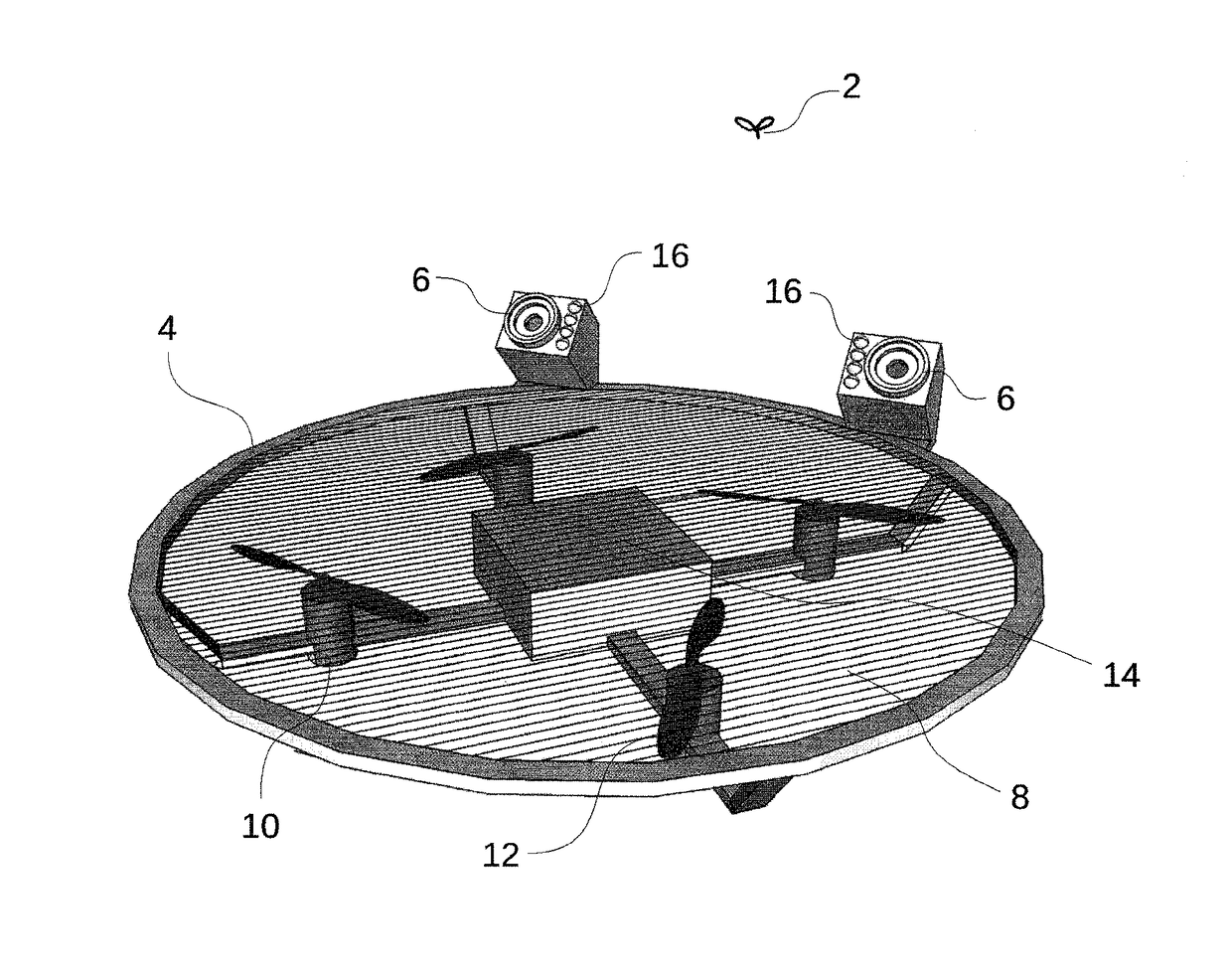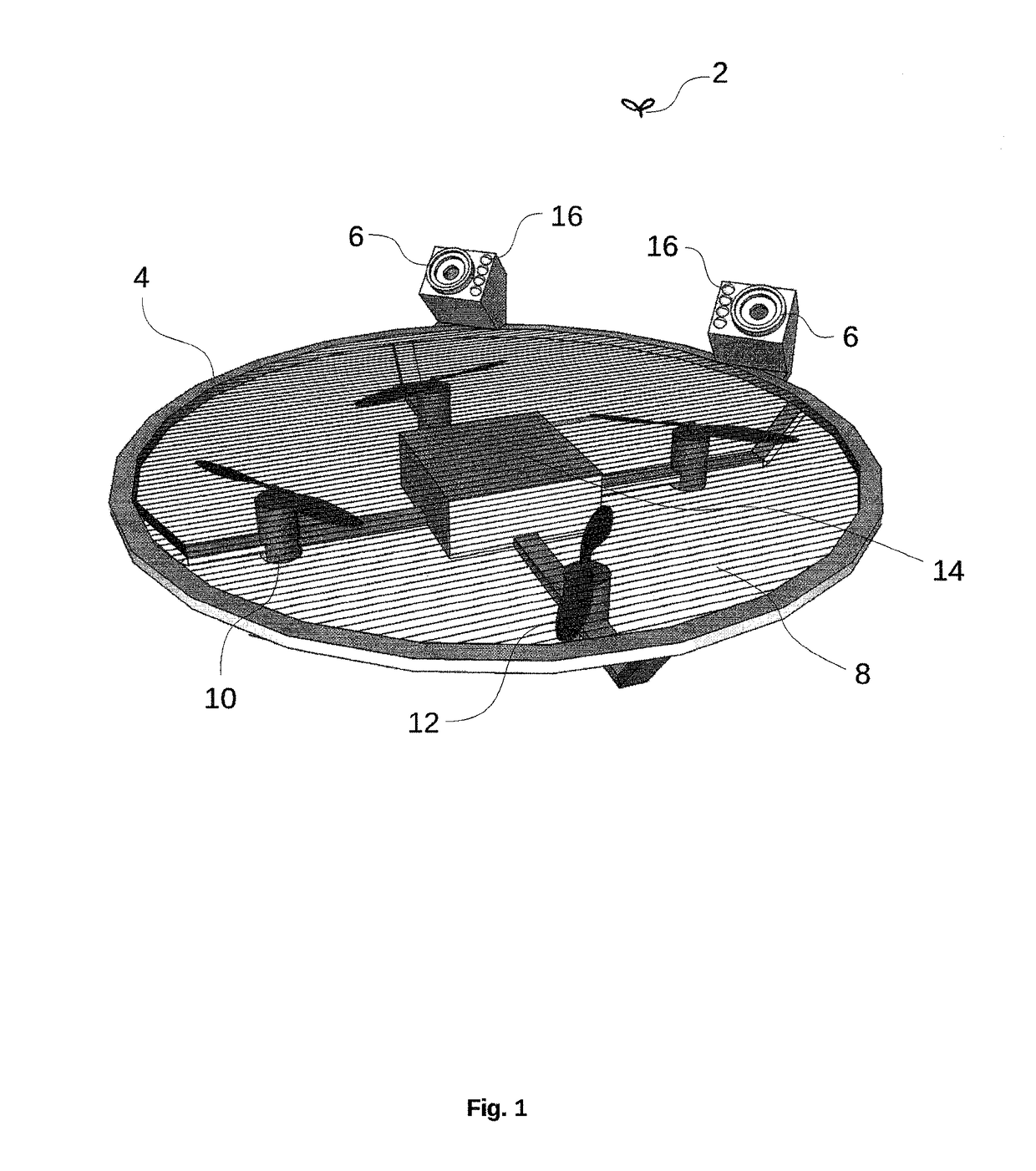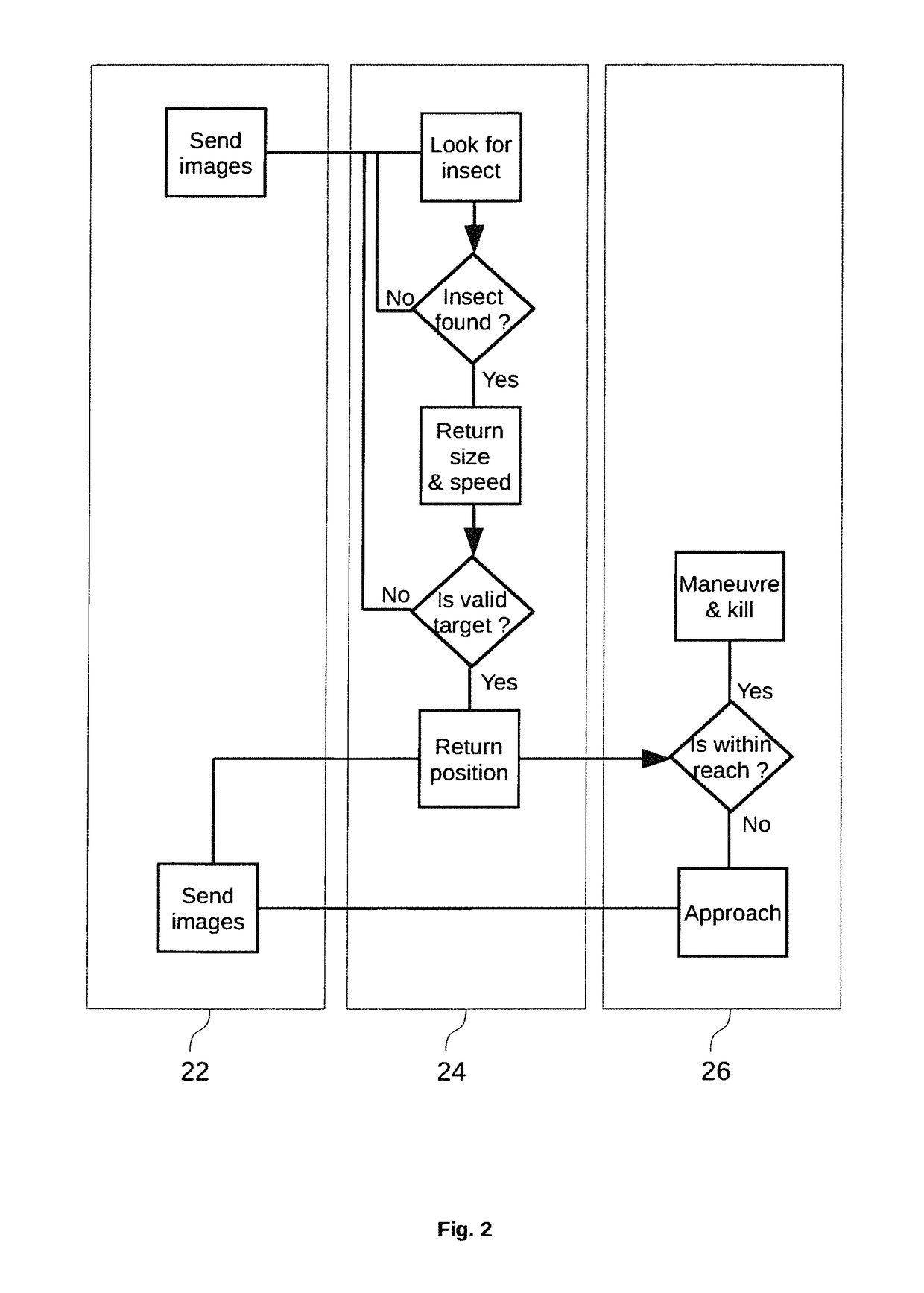UAV-enforced insect no-fly zone
a technology of insect no-fly zone and insect net, which is applied in the field of uav-enforced insect no-fly zone, can solve the problems of inconvenient use, limited efficiency, and inability to prevent mosquito bites,
- Summary
- Abstract
- Description
- Claims
- Application Information
AI Technical Summary
Benefits of technology
Problems solved by technology
Method used
Image
Examples
first embodiment
Description
[0038]In the following description, reference is made to the accompanying drawing (FIG. 1), which form a part hereof.
[0039]As shown in FIG. 1, a system for identifying, tracking and electrocuting female mosquitoes 2 includes in a particular embodiment a UAV 4, two infrared CMOS cameras 6, an electrified grid 8 and two processors.
[0040]This particular embodiment is designed to counteract female mosquitoes, however other embodiments may target other particular insect species or types, e.g. wasps or flies, or may target a set of different species or types.
[0041]In this particular embodiment, the UAV is an instance of a miniature quadrotor design, well known of those skilled in the art. The UAV comprises four electrical engines 10, four rotors 12 and a central unit 14. The central unit comprises a battery, four engine speed controllers and two processor boards.
[0042]The first processor board is an upper-level control board with an integrated GPU for advanced image processing....
second embodiment
[0060]As shown in FIG. 3, a system for identifying, tracking and counteracting female mosquitoes 2 or other insects includes in this particular embodiment a UAV 4, a ground station 6 and two imagers 8.
[0061]In some other approaches, the number of UAVs, imagers and processors may be different. In this particular embodiment, the UAV and the ground station each include a processor, but in some other embodiments the number of processors may be different. The ground station featured in this particular embodiment is a common type of personal computer with sufficient processing power. In other embodiments the ground station may be a more specialized unit.
[0062]In this particular embodiment, the UAV is an instance of a miniature quadrotor design, well known of those skilled in the art. The UAV features a battery, four electrical engines 10, four rotors 12 and a flight control unit 14 comprising a processor and inertial measurement unit (IMU). Other embodiments may feature different types of...
third embodiment
[0075]As shown in FIG. 4, a system for identifying, tracking and counteracting female mosquitoes or other insects includes in this particular embodiment a UAV 2 and an imagers set 4.
[0076]In this particular embodiment, the tracking and counteracting system protects a defined zone 6 against female mosquitoes.
[0077]The imagers set and the UAV each include a processor.
[0078]In some other approaches, the number of UAVs, imagers in the imagers set and processors may be different.
[0079]In this particular embodiment, the UAV is an instance of a miniature quadrotor design, well known of those skilled in the art. Other embodiments may feature different types of UAVs like ornithopter or plane, different types of rotorcrafts like hexacopter or octocopter. They may feature different types of imagers and sensors like ultrasonic distance sensors.
[0080]In the illustrated embodiment, the imagers in the imagers set each include an infrared CMOS cameras. A variety of other imagers may also be appropr...
PUM
 Login to View More
Login to View More Abstract
Description
Claims
Application Information
 Login to View More
Login to View More - R&D
- Intellectual Property
- Life Sciences
- Materials
- Tech Scout
- Unparalleled Data Quality
- Higher Quality Content
- 60% Fewer Hallucinations
Browse by: Latest US Patents, China's latest patents, Technical Efficacy Thesaurus, Application Domain, Technology Topic, Popular Technical Reports.
© 2025 PatSnap. All rights reserved.Legal|Privacy policy|Modern Slavery Act Transparency Statement|Sitemap|About US| Contact US: help@patsnap.com



